URBAN FOREST
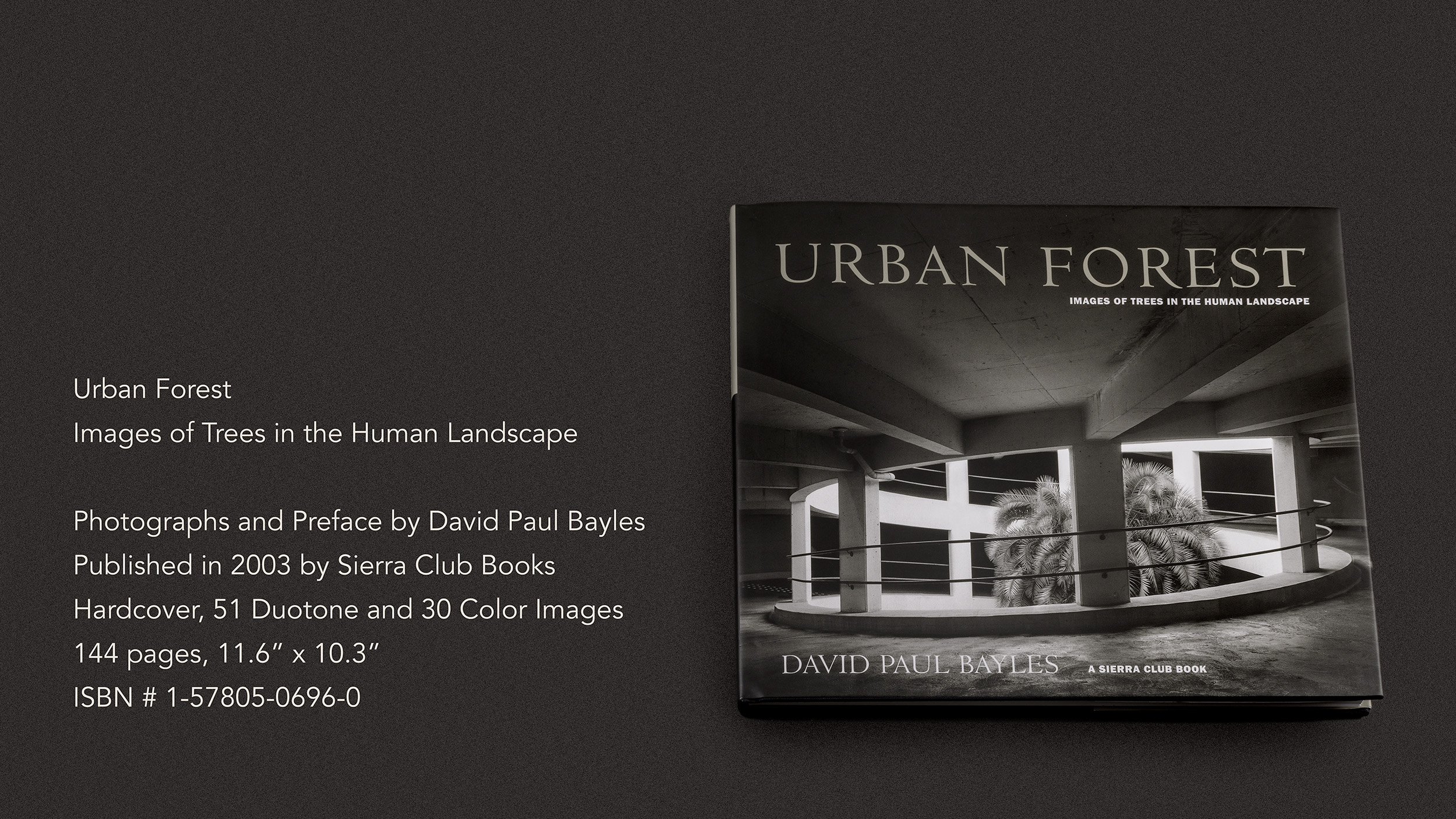

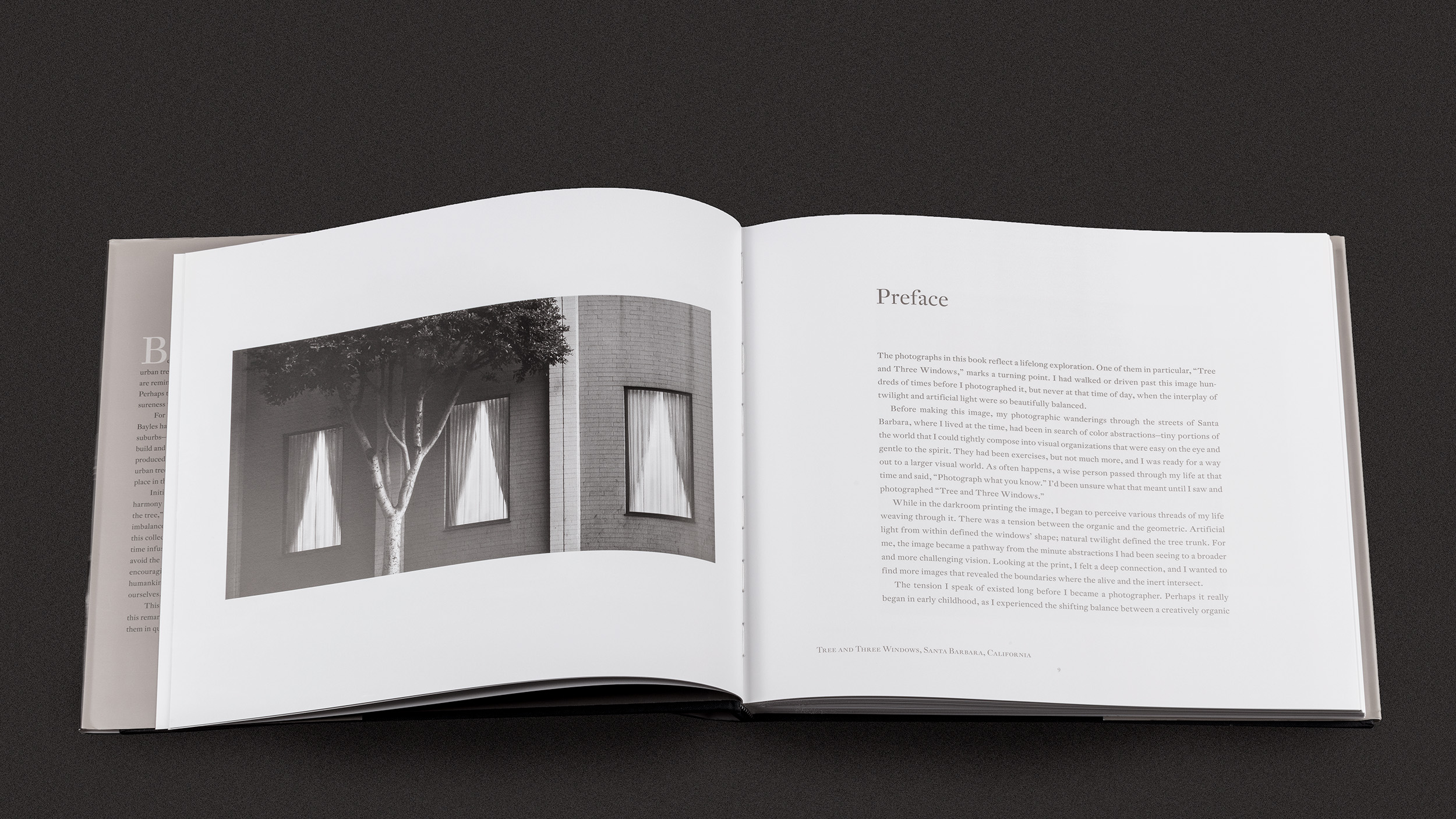
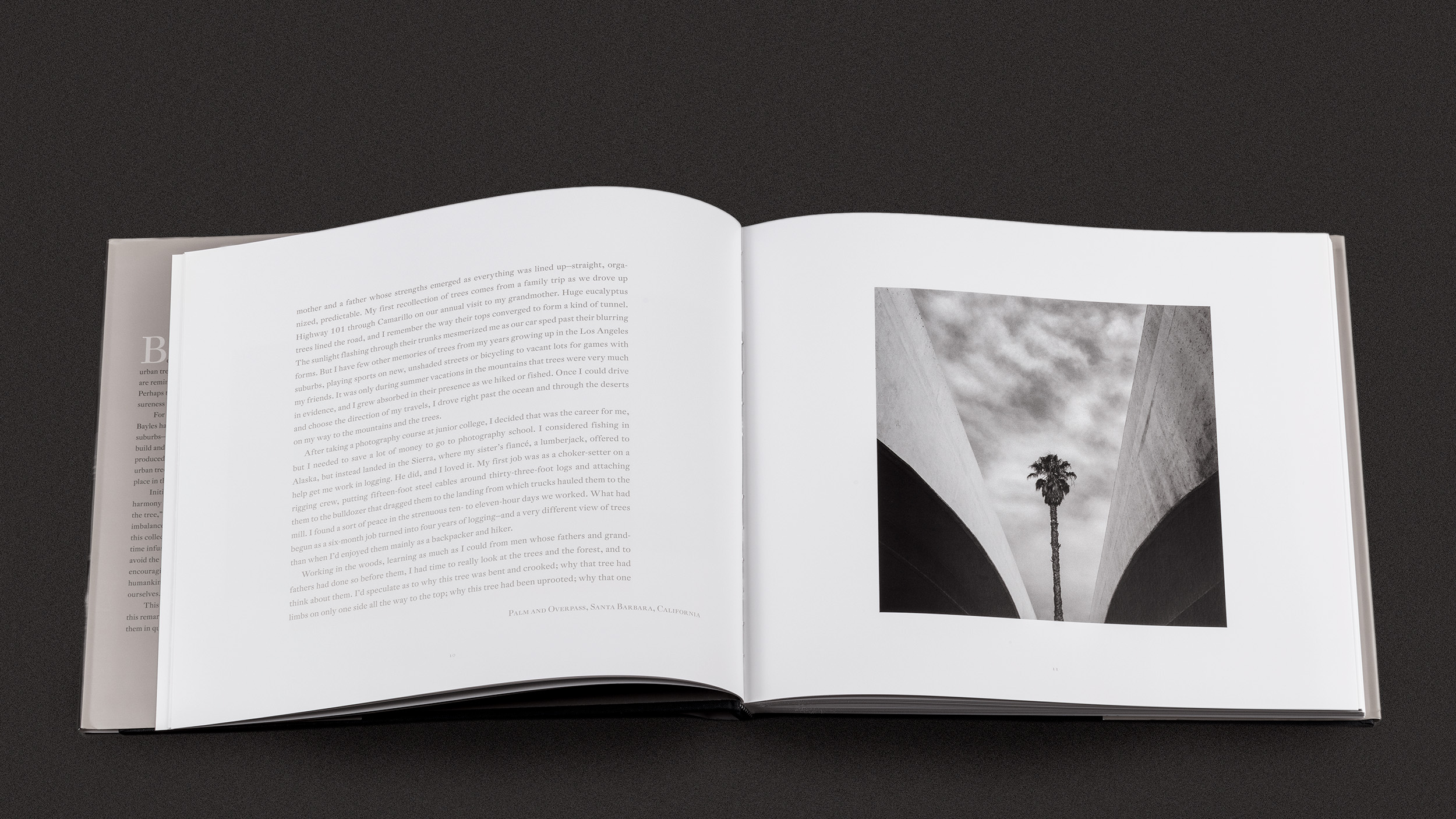
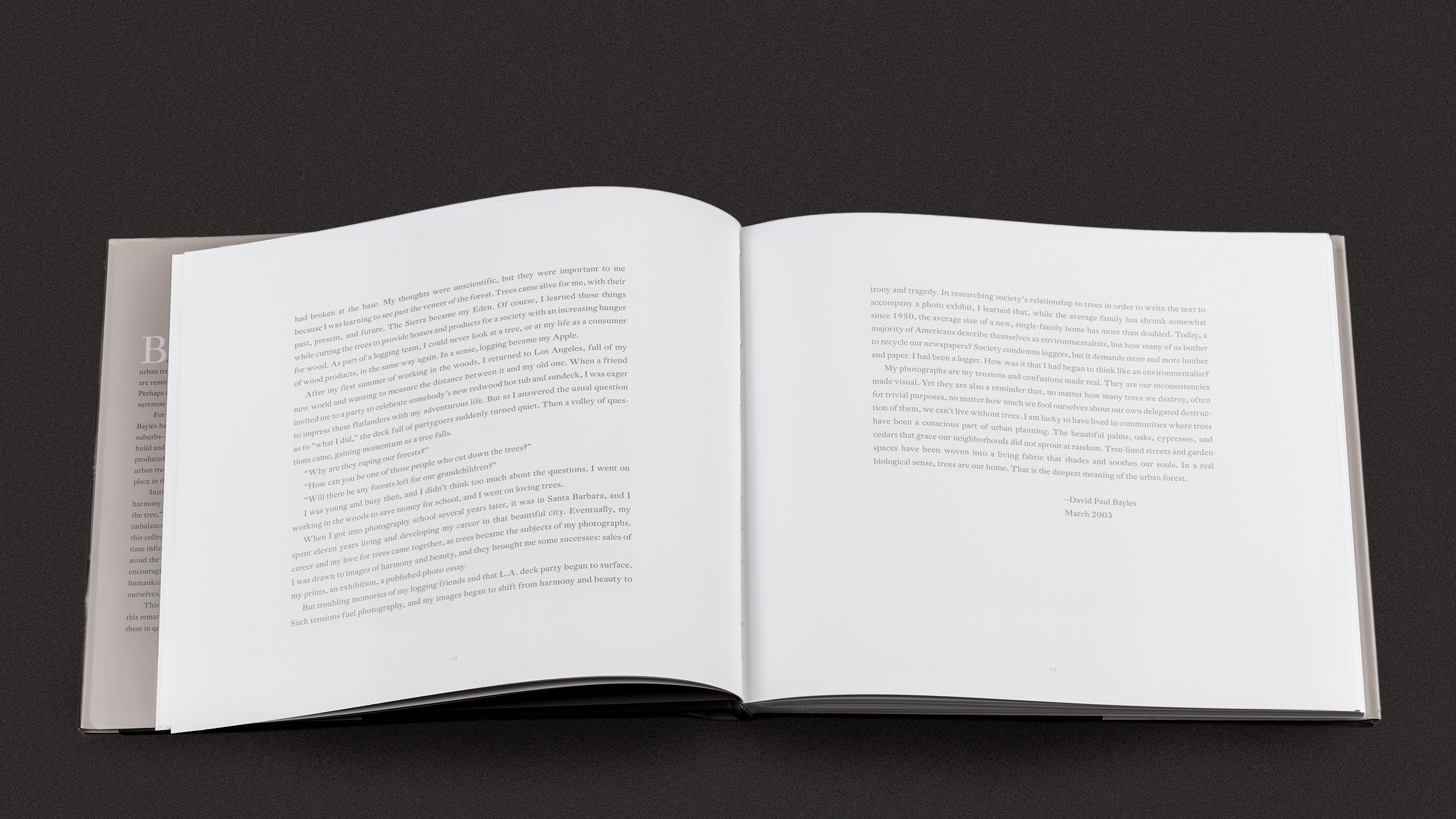




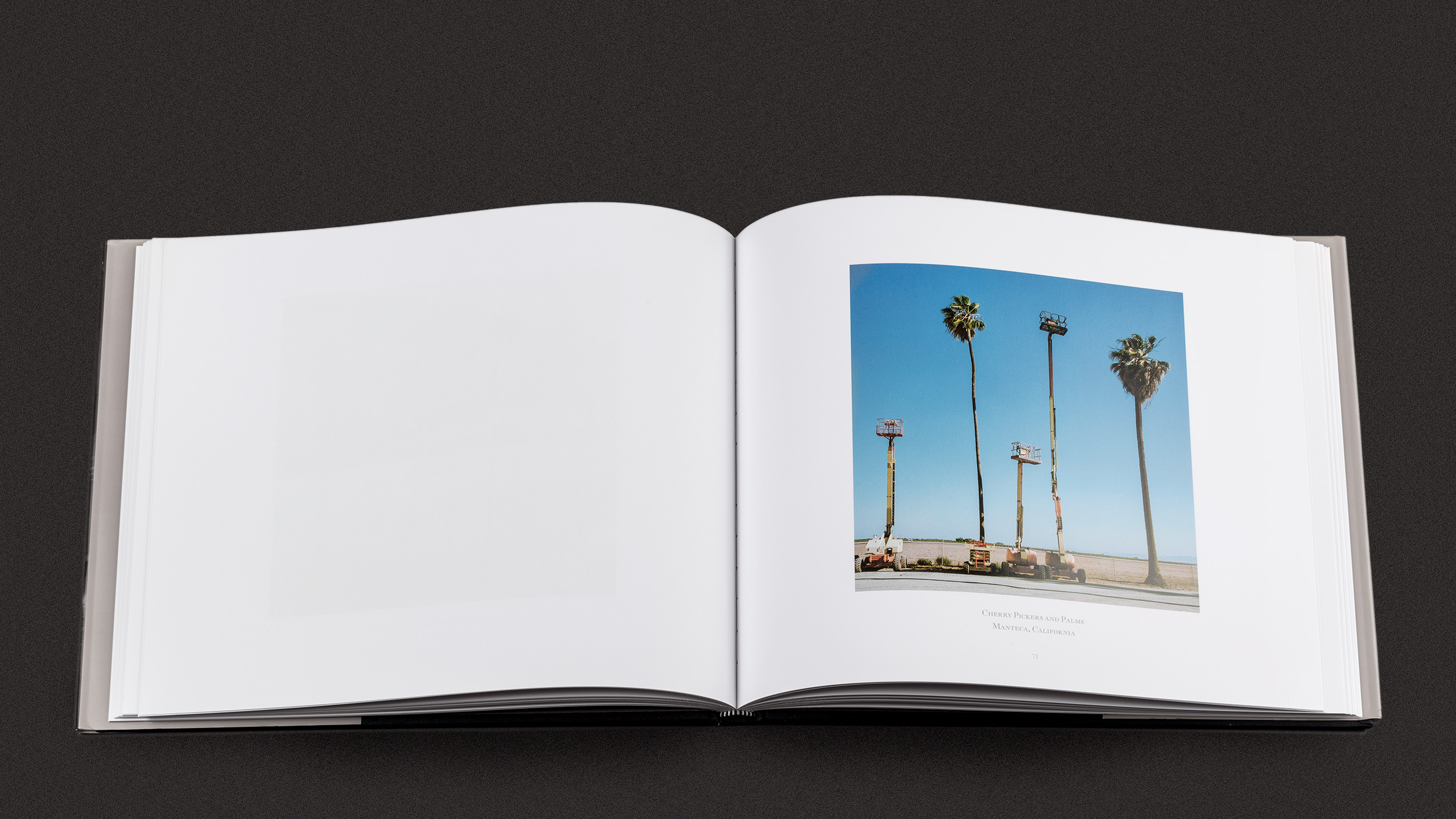
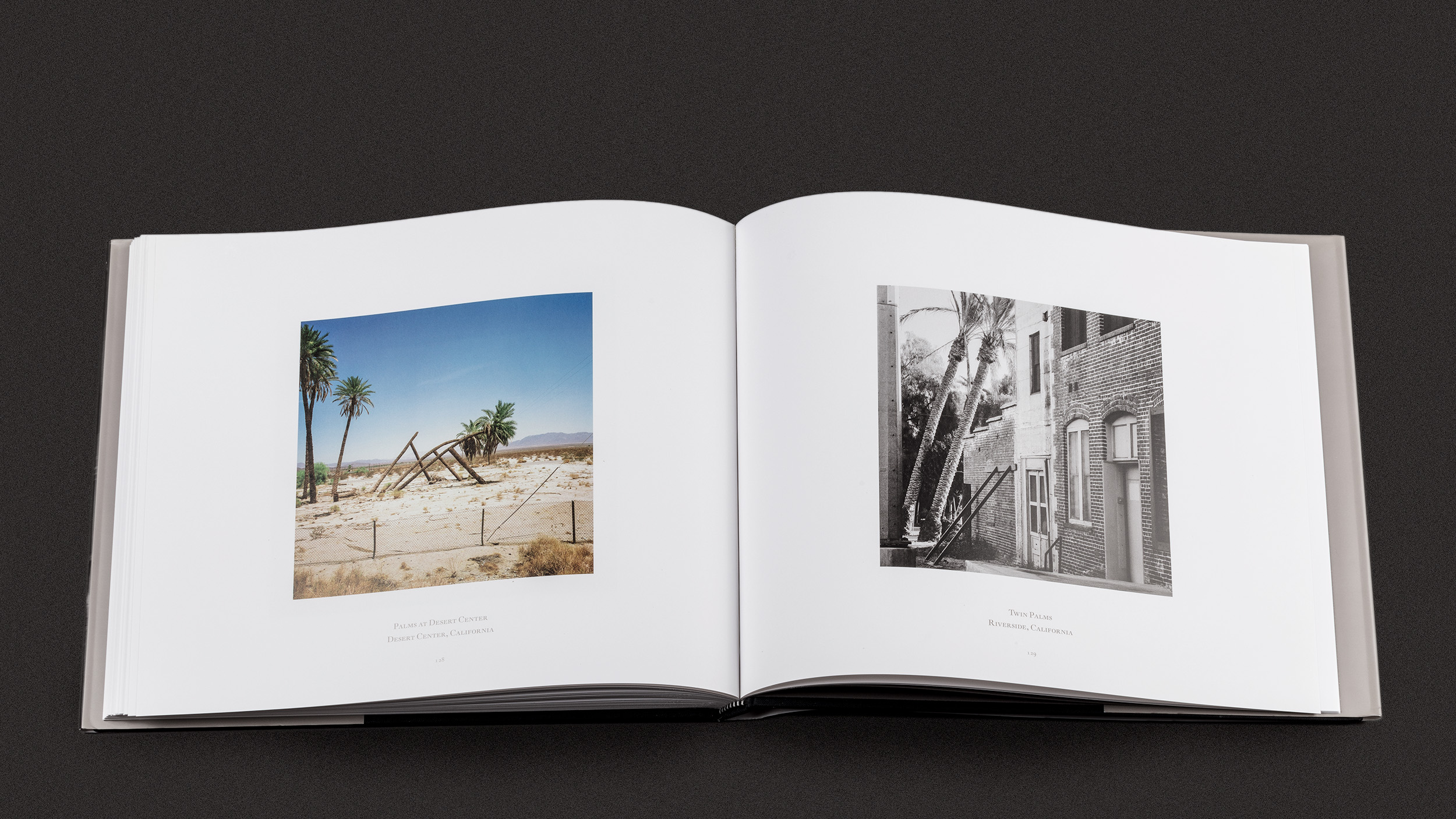

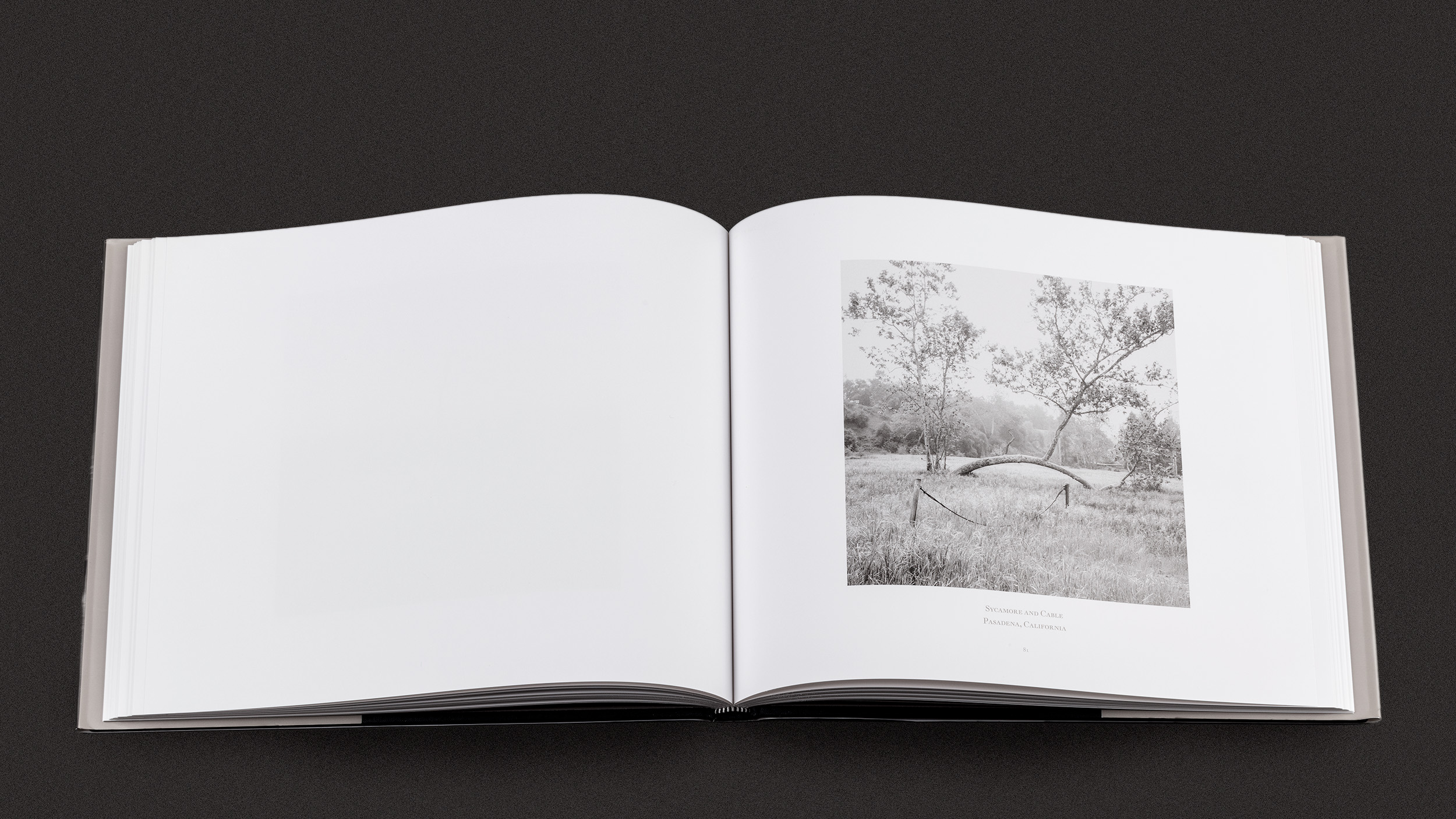


$ 40 Purchase Now
-
Beyond their aesthetic and utilitarian importance, urban trees seem to fill a deeper need. Perhaps they are reminders of the inexorable cycles of the natural world. Perhaps they serve as eddies and rills of slowness and sureness within the frantic rush of our urban environment.
For more than two decades, photographer David Paul Bayles has been making images of trees in cities and suburbs—places of tension, as he puts it, between “what we build and what we grow.” This beautifully designed and produced volume showcases his extraordinary vision of urban trees and their often precarious, sometimes triumphant, place in the human landscape.
Initially drawn to his subject by “the balance and harmony between the manmade structure and the tree,” Bayles has also found and photographed plenty of imbalance and human folly along the way. The images in this collection are laconic, almost deadpan, yet at the same time infused with irony, humor and compassion. They encourage each of us to see the relationship between humankind and trees-in all its complexity— for ourselves.
This much is certain: Those who delve into the pages of this remarkable book will never again look at the trees around them in quite the same way.
-
THE CHRISTIAN SCIENCE MONITOR, December 9, 2003 by Greg Palmer
"In these black-and-white and color photographs, Bayles shows us what we see and don't see every day: trees in full splendor, trees barely surviving, or in some cases, trees ready for the fireplace or landfill. His pictures, mostly taken in California, show an eye for angle and juxtaposition, humor as well as (silent) social commentary. . . .Bayles provides simple captions under his pictures with brief descriptions in the back of the book. It's fun to be let in on how a photo came to be. You don't have to be a tree hugger to appreciate these urban forests."
The Monitor selected Urban Forest as one of the seven best photography books of the year.
LOS ANGELES TIMES MAGAZINE, Nov 17, 2002 by Richard E. Cheverton
“ ... Bayles’ images of trees avoid the trap of propaganda; these are not cute or angry or tragic surrogates for human politics. Instead, they seem weirdly like visitors from another world, perhaps another dimension -- and, in a real sense, they are. Trees, no less than epoch-layered rock canyons, remind us that there are different ways of computing time; that within the frantic rush of man-made cities are eddies and rills of slowness, sureness; that there are cycles as profound as the procession of the stars...”
SANTA BARBARA MAGAZINE, Dec/Jan 2004
“In Urban Forest: Images of Trees in the Human Landscape , photographer David Paul Bayles explores the interface of trees and cities in images that are graphically real, sometimes surreal and always compelling.”
AUDUBON, Dec. 2003, Lindsay Carswell
Art of the Wild For those of us who live in cities or suburbs, nature is often an invisible backdrop. In his ethereal and amusing new book, Urban Forest: Images of Trees in the Human Landscape, photographer David Paul Bayles shows the different trees (and sometimes trunks and limbs) in our midst. Urban Forest offers a revealing look at society’s relationship with nature. This striking selection of photos, gathered over two decades, displays what Bayles calls ‘a tension between the organic and the geometric” and the various ways architecture and urban landscapes reflect the natural world. Urban Forest also reminds us that remnants of wild nature persist all around us; Bayles’s images testify to nature’s fragility and resilience.
BLOOMSBURY REVIEW, Nov/Dec 2003, Review by John A. Murray
"Bayles has done a fine job with this book, which reminds us all of a simple but persistent fact: Trees are as essential to human life as the oxygen they produce or the beauty they present or the shelter they provide. Being an urban dweller for most of my life, I was struck by the innovative techniques the photographer used to reveal the extraordinary in the ordinary. Through his lens, we perceive our surroundings in new and often instructive ways."

